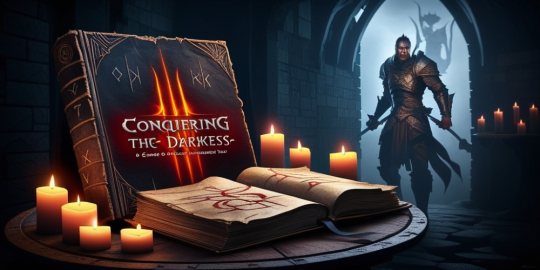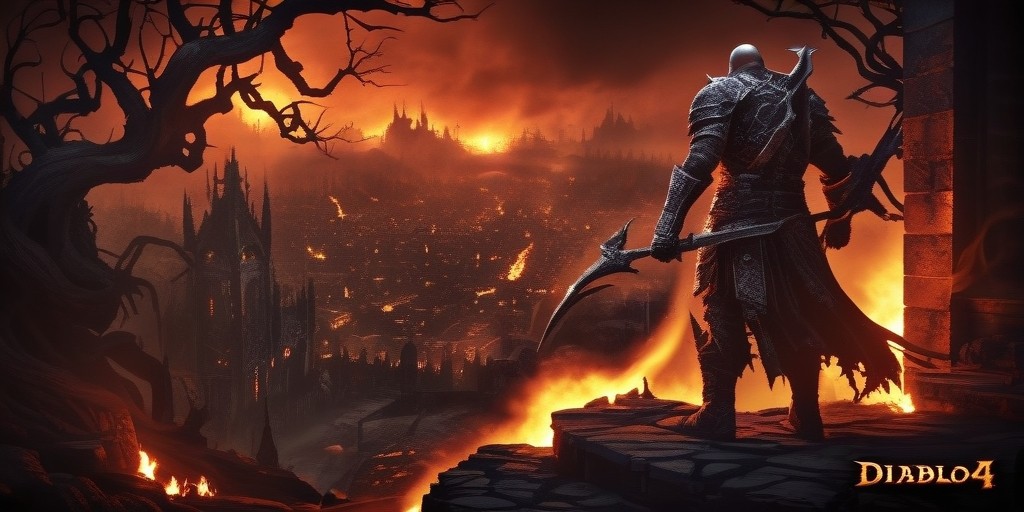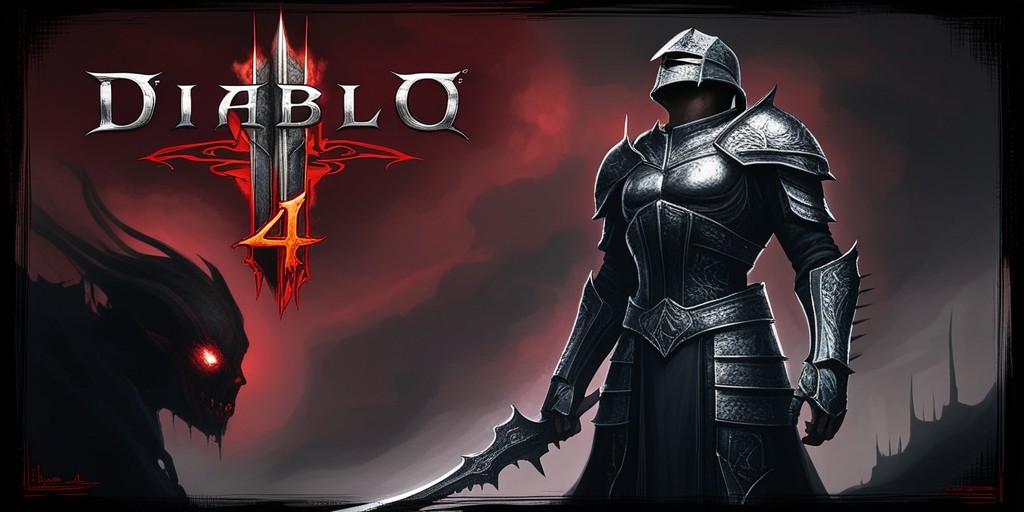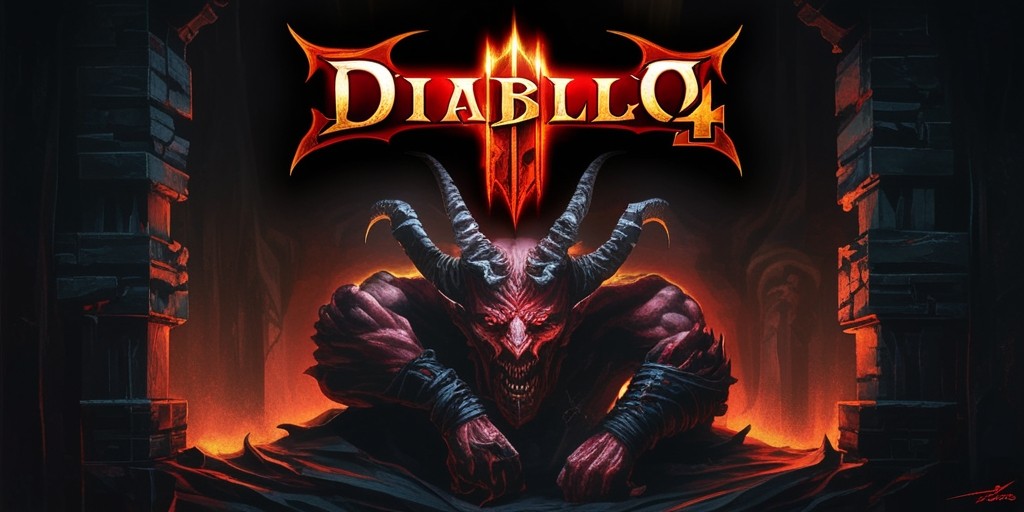
With the arrival of Diablo 4 Season 6, gamers are in for a treat thanks to the exciting introduction of the first significant expansion, Vessel of Hatred. This new season is packed with an array of alterations and exciting content, blending both exclusive DLC features and fresh updates to existing systems. One of the standout transformations is in the difficulty framework, reminiscent of the Torment tiers from Diablo 3. Adventurers can now challenge themselves further, but only after preparing adequately to face these formidable obstacles.
Understanding Leveling Mechanics
As you embark on your journey in Diablo 4, it's essential to grasp the new maximum level cap that now stands at 60. This elevated limit is critical, especially before you can access the newly implemented Torment tiers. Initially, players will encounter four standard difficulties: Normal, Hard, Expert, and Penitent. Each level offers an escalating percentage of experience and gold—Normal as the baseline, while the others increase your rewards by 75%, 125%, and 175% respectively. These levels come with loose recommendations based on the quality of loot you've gathered along the way.
Starting Your Adventure
Newcomers to Diablo 4 are encouraged to commence their quest on Normal difficulty. This early choice isn’t merely about gaming prowess; it serves to accommodate the limited skills available to beginning players. Those familiar with the game will benefit from returning character Renown rewards, providing several skill points to utilize from the get-go. This head start allows seasoned players to tackle Hard difficulty right away while newcomers can incrementally build their capabilities.
Progressing Through Difficulties
As you advance through the early levels, there’s a natural progression to consider. By roughly level 30, players can transition to Expert difficulty, and around level 45, the Penitent tier becomes available. Since players can switch between difficulties at designated towns, it’s always an option to trial harder modes and revert if necessary. This flexibility ensures that you won't feel trapped in a challenging situation. It’s all about finding the right balance between challenge and enjoyment.
Introducing the Torment Tiers

With the foundation set, let’s delve into the Torment tiers, which introduce a new layer of challenge. These levels are accessible only after overcoming specific difficulty structures, with unlocking contingent upon completing runs in The Pit. The Torment tiers differentiate themselves further by offering higher rewards and unique item qualities—specifically, the introduction of Ancestral quality items at Torment 1, which imbue players with improved affixes over standard loot.
Loot Rewards and Their Impact
Progressing through the Torment tiers not only enhances the quality of loot drops but also augments the chances of encountering rare items. Although the precise numbers are kept hidden within the game dynamics, players can feel the improvement in the loot system as they climb the ranks. This increase in loot quality is a massive incentive for those who seek the thrill of powerful gear and enhanced gameplay.
Armor and Resistance Mechanics
One critical aspect to note is the armor and resistance changes at each Torment level. For instance, stepping into Torment 1 results in a notable loss of 250 armor and 25% in resistances, while by Torment 4, these losses escalate to a staggering 1,000 armor and complete resistance elimination. This necessitates players to meticulously tailor their character builds to account for these reductions, ensuring they have enough defense to survive the inevitable challenges.
Enemy Scaling and Increased Difficulty
As players ascend through the Torment ranks, the enemy health and damage output also see a significant increase, adding a layer of depth to the combat experience. Consequently, players must enhance their damage potential to keep pace with these rising threats. The ongoing fight for survival becomes intertwined with the necessity for strategic build preparation.
Final Preparations for Torment Levels

Before you can unlock the next Torment tier, Diablo 4 assists you by requiring players to successfully complete a run in The Pit at their current Torment level. This structured check acts as a readiness check for your build, challenging players to ensure they have what it takes to handle the increased difficulty. It also adds another layer of strategy to your character build, as players must find the balance between optimizing for utility and sustaining their defenses.
Charting Your Torment Path
The following outlines the specific requirements to reach each corresponding Torment level, giving players a clear path to follow. The Pit, the central hub for these upgrades, serves as both a testing ground for players’ skills and a progression measurement tool.
Unlocking Torment Levels: A Comprehensive Guide
As players navigate through the challenges, it’s essential to acknowledge the following unlocking requirements:
To access Torment 1, players need to complete The Pit at Tier 20. Progressing to Torment 2 requires a completion of The Pit at Tier 35. Those aiming for Torment 3 must conquer The Pit at Tier 50, while Torment 4 necessitates a completion at Tier 65. Each of these tiers offers a nuanced way to level up your character while ensuring you are prepared for the escalating challenges ahead.
Mastering the Paragon System

In addition to unlocking Torment tiers, players will find that The Pit serves a dual purpose by facilitating upgrades to Paragon Glyphs. Engaging in multiple runs is pivotal for powering up the Paragon board, further emphasizing the importance of balancing difficulty and build optimization. This structure encourages players to continually engage with the mechanics of the game while delivering significant long-term benefits for character development.
Elevating Your Gameplay Experience
With the advent of Season 6 in Diablo 4, players have a golden opportunity to delve deep into an enriched gaming experience. From ascending through a well-defined structure of difficulties to mastering the complexities of armor, resistance, and loot quality, every aspect of this season beckons players to rise to the occasion. The mechanics introduced not only provide a balanced challenge but also encourage strategic thinking and advanced gameplay, which is at the heart of what makes Diablo engaging. As you progress, remember that preparation is key to enjoying the full scope of what Season 6 has to offer.
Conclusion: Embrace the Challenge
The journey through Diablo 4’s newly defined difficulty options is not simply a test of your skills but also a rewarding adventure filled with potential for growth and discovery. Whether you are a newcomer finding your way or a seasoned adventurer ready for the next challenge, the new systems invite all players to explore and conquer the myriad difficulties that await. Dive into the Vessel of Hatred expansion, and with each monster slain and treasure uncovered, enhance your skills and craft a legend of your own.